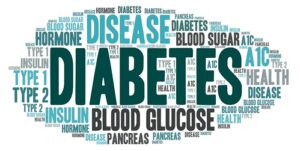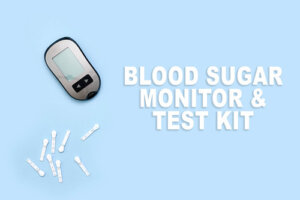
By: EpicTop10.com
What is Diabetes?
Diabetes Mellitus (DM) is a condition characterized by uncontrolled sugar (glucose) levels in the blood. It is the seventh leading cause of death in the United States alone. It has many different subtypes (Gestational Diabetes- seen in pregnant women, Neonatal Diabetes- seen in infants within the first 6 months of birth). Type 1 and Type 2 Diabetes are the main subtypes.
Both type1 and type 2 Diabetes are the result of absent or defective use of insulin, which is a hormone that is produced in the body to help regulate the level of sugar in the blood. Because the two subtypes have different disease development, each type has its own set of treatments, disease presentation and causes.
Type 1 Diabetes
- Is autoimmune- meaning the body attacks and destroys cells that produce insulin
- Typically presents in children (birth to 6 years old) and adolescents (10-14 years old)
- The body does not produce insulin or produces very low levels
Type 2 Diabetes:
- Typically affects middle-age and older adults
- Results from a combination of genetic factors and lifestyle
- Stronger hereditary factor compared to Type 1 (can be seen in at least one parent of a diabetic patient)
- Risk is associated with extended high blood sugar levels (hyperglycemia) caused by poor diet and lifestyles choices.
Presentation
Presentation between Type 1 and Type 2 may look similar but can be distinguished by clinical history and exams. They are more abrupt in Type 1. Slow presentations and mild symptoms in Type 2 Diabetes results in delayed treatments. Symptoms include:
- Excessive thirst, hunger
- Abnormal volumes of urine
- low energy, tiredness
- weight loss (Common in Type 1)
- Type 2 typically presents with signs of overweight and obesity
- blurry vision
- Numbness
- slow-healing wounds
- Diabetic Ketoacidosis- because the body is unable to use sugar effectively, the body breaks down fat for energy, as a result dangerous levels of acids are released in the body and can cause a diabetic come/death.
Treatment
- Monitor glucose levels
- Taking insulin, daily injections or a pump
- Monitor diet and exercise- Eating a balanced diet low in sugar and being physically active
- Taking necessary diabetes medications prescribed by physician
- Fat reduction surgery for those who are extremely obese to help the body use insulin
Myths Surrounding Diabetes
1. Diabetes is the sugar disease, caused by eating candy as a child
- Early presentation of diabetes is typically associated with Type 1 diabetes, which is the body not being able to produce insulin.
2. Diabetes is seen in overweight/obese people
- Not every obese person is diabetic and not every diabetic person is obese. While obesity is a risk factor, it is not the central cause of diabetes.
3. Diabetes is contagious and there’s only 1 type.
- Diabetes is not contagious and there are more than 1 type with different presentations.
It’s important to debunk myths concerning the condition to decrease stigma. Misrepresentation creates psychological, emotional and social effects such as depression, anxiety, decreased social interactions in an effort to minimize the shame and guilt from stigmas.
Follow-up Care
Because Diabetes affects the body in multiple ways, regular screenings are necessary to maintain, treat and/or prevent secondary comorbidities. Examples include:
- Regular eye exams to treat/prevent Diabetic Retinopathy – which a condition where the blood vessels in the eyes become damaged due to poor regulation of blood sugar levels.
- Daily foot inspections/diabetic foot test- checking to make sure there are no wounds in the foot that are unnoticed because of numbness caused by nerve damage. Wounds can potentially lead to infections which can lead to amputation of the foot.
References:
Kharroubi, A. T., & Darwish, H. M. (2015). Diabetes Mellitus: The Epidemic of the Century. World journal of diabetes, 6(6), 850–867. https://doi.org/10.4239/wjd.v6.i6.850 https://www.ncbi.nlm.nih.gov/pmc/articles/PMC4478580/
Liu, N. F., Brown, A. S., Folias, A. E., Younge, M. F., Guzman, S. J., Close, K. L., & Wood, R. (2017). Stigma in People with Type 1 or Type 2 Diabetes. Clinical diabetes: a publication of the American Diabetes Association, 35(1), 27–34. https://doi.org/10.2337/cd16-0020 https://www.ncbi.nlm.nih.gov/pmc/articles/PMC5241772/
Schabert, J., et al., (2013) Social Stigma in Diabetes: A Framework to Understand a Growing Problem for an Increasing Epidemic. The Patient – Patient-Centered Outcomes Research. https://doi.org/10.1007/s40271-012-0001-0 https://link.springer.com/article/10.1007/s40271-012-0001-0
Sapra, A. & Bhandari, P. (2023). Diabetes. StatPearls. Treasure Island (FL): StatPearls Publishinghttps://www.ncbi.nlm.nih.gov/books/NBK551501


Awesome Blog! I really enjoyed reading the “myths” section. I thought that the follow up care was beneficial information that you also included. I had no idea that an individual with diabetes needs foot inspections in order to make sure there are no wounds caused by nerve damage! Wow. I had no idea that diabetes affects multiple areas in the body in multiple ways, which could lead to very serious issues. Thank you for this informative blog post.
Great blog! it is so informative and eye-opening blog on diabetes and the myths surrounding it! Your detailed breakdown of common misconceptions really helps dispel the misinformation that often circulates. It’s evident that you’ve put a lot of effort into research, making this a valuable resource for anyone looking to better understand the realities of diabetes.